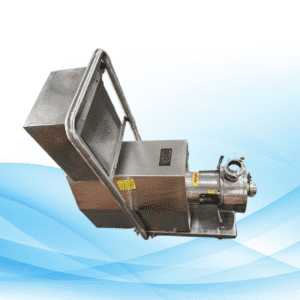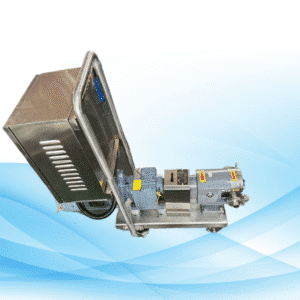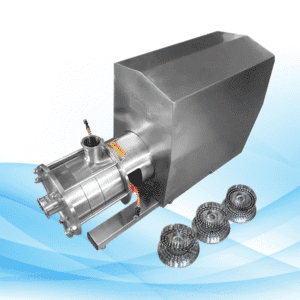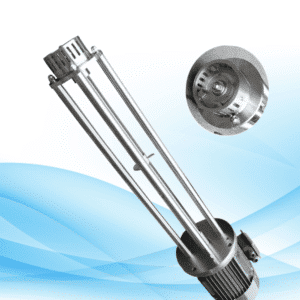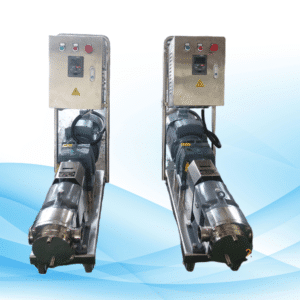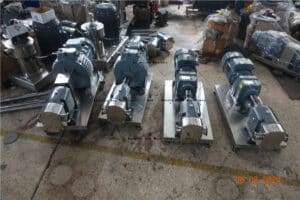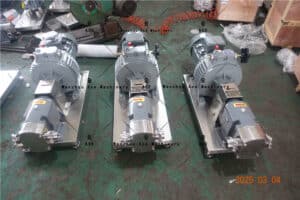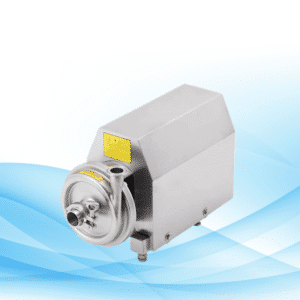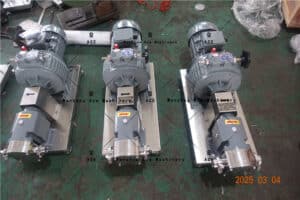Key Achievements
– These positive displacement pumps offer unprecedented versatility, managing a viscosity of 1,000,000cp and a temperature of 450°C.
– Rotary lobe pumps with these characteristics are unrivaled in providing rotary positive displacement pumps where requirement is intensive.
– An efficient solid handling capability of 61mm, 30 bar pressure capabilities, and operation in dry running conditions are some of the features.
– The design as well as seal system of the pump chamber strive to achieve the highest operational efficiency and lowest lifecycle costs and thus guarantee reliable long-term use in varying industrial applications.
– Gentle product handling, even for sensitive materials, is a hallmark of industrial lobe pumps which also maintain high-pressure capabilities.
Working Mechanism of Lobe Pumps
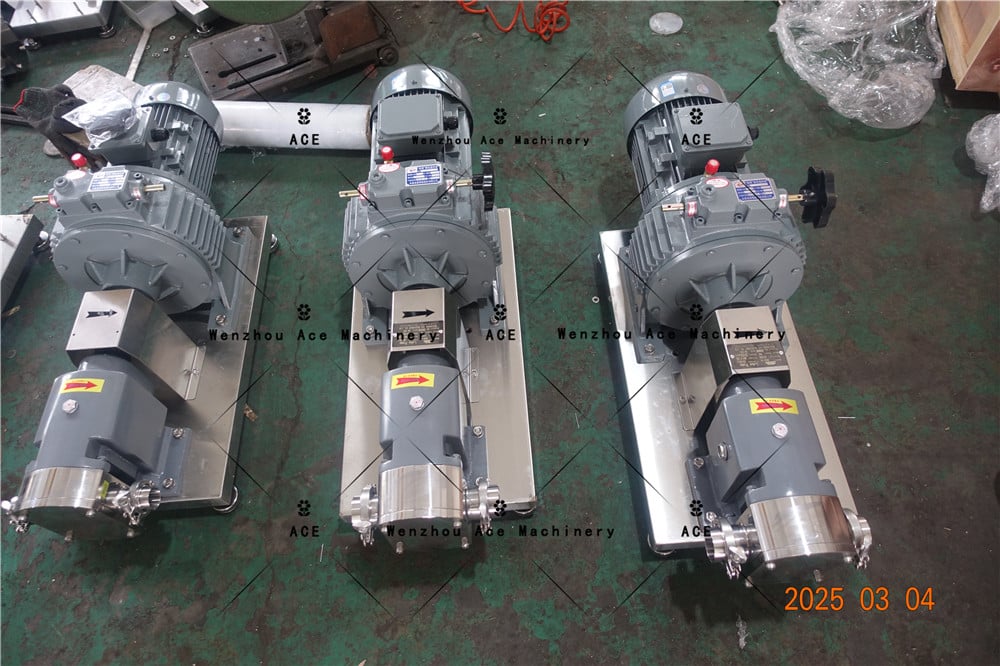
Basic Operating Principle
A lobe pump casing contains two or more lobes that are precisely crafted to rotate in a synced fashion. As the lobes progress to the suction side of the pump, expanding cavities form, and a vacuum effect draws the fluid in. It creates a rotating motion that propels the fluid through the pump chamber to the discharge side.
The pump casing has to be very streamlined so that the lobes do not come into contact with each other, or the pump casing, and contactless handling is important in controlling the product’s integrity.
Fluid Movement and Flow Modification
Fluid movement in lobe pumps takes place by means of positive displacement. The pumping action of the pump is performed by the rotation of the lobes which forms sealed cavities between the lobes and the housing of the pump. Each cavity contains a set amount of fluid whose volume is moved from the inlet to the outlet port.
The lobe pumps also ensure uniform and steady continuous flow without any pulses. This feature makes them particularly suitable for many operations where uninterrupted transfer of fluid is required. The flow rate is a function of the size of the chambers and the speed at which the pump is rotated. High speeds result in higher flow rates. On the other hand, low speeds would allow for better precision in control over the transfer of fluid.
Technological Advancements in Lobe Pumps
Rotary pumps are now equipped with additional features increasing their usefulness and dependability in industrial applications. Such features are distinct when compared to other pumps, demonstrating greater effectiveness in a variety of tasks.
Technological advancements in lobe pumps have streamlined its internal workings within the synchronized rotor system. These rotors move harmoniously at a certain distance from one another meaning no physical contact will take place. Minimum wear is guaranteed with the help of the precision timing gears which provide smooth operations.
Sealing Technology and Durability
Containment seals as well as mechanical ones are parts of the multi-layer sealing configuration that aids in providing additional stability to its operation. The systems make it possible to maintain the seals and without any leakage occurring while still ensuring significant reliability for continuous operations.
The sealing technology has the following features and can adapt to different operating conditions:
– Double mechanical seals for more dangerous media.
– Quench single mechanical seals.
– Lip seals for other applications are also provided.
– Stuffing box arrangements that are purposely designed for difficult environments.
Working Parameters
Range of Flow and Pressure
With a flow rate between 1 to 375 m³/hr, the industrial lobe pumps have a performance that surpasses expectations. Also surpassing expectations is the 30 bar pressure this pump operates on, showcasing it’s proficient for demanding tasks. Relentless pulse free flow prevents wear and tear on the product and allows smooth operation.
Handling of Temperature and Viscosity
Handling temperatures of -40°C to 450°C is considered to be ultra high and these pumps do that seamlessly. The extreme cooling and specialized material techniques integrated into the advanced design enable optimum performance even during thermal extremes.
Due to the self-priming action of lobe pumps, they are able to deal with air and gas entrapment. They have suction lift limits of 8 meters which most lobe pumps are unable to do, smooth flow in complex and tangled piping systems becomes easy.
Industrial Applications
Oil and Gas
Rotary lobe pumps have exceptional reliability while managing highly viscous fluids in the oil and gas sector, up to 1,000,000cp. These pumps effectively manage crude oil, drilling mud, and various petroleum products while maintaining constant flow rates even in extreme conditions.
Chemical Manufacturing
In chemical manufacturing, lobe pumps showcase versatility while dealing with corrosive and reactive substances. Their gentle pumping action helps maintain the chemical’s integrity, making them ideal for aggressive chemicals due to the material’s special make of resistant Hastelloy B and Titanium.
Wastewater Treatment
These pumps assist greatly with wastewater supervision as they efficiently manage sludge and contaminated water. They are ideal for dewatering processes and sewage transfer operations because of their solid handling capabilities of up to 61mm and flow rates of 375m³/hr.
Pulp and Paper Manufacturing
Lobe pumps are heavily relied on in the paper industry for transferring different consistencies of pulp as well as coating materials. The ability to handle materials of both low and high viscosity makes these pumps essential in completing many paper production processes.
Mining Operations
For their intended purpose, these pumps are particularly suited for the transport of abrasive slurries and mineral concentrates. Their design, construction, and materials feature trade-offs to achieve optimum performance while ensuring longevity in the harsh mining conditions.
Durability and Maintenance
Built to Last
Industrial lobe pumps have been constructed with one of the highest levels of durability in mind. The robust construction utilizes appropriate materials such as stainless steel and specialized alloys which have increased resistance to wear, corrosion, and chemical degradation.
Critical Maintenance Steps
A scheduled maintenance policy is fundamental to the reliable functioning and life expectancy of a pump. MIP® (Maintenance In Place) facilitates rapid inspection and interchange of wearing components without disassembly of the complete configuration. Critical maintenance activities involve but are not limited to the following actions:
– A check-up on seals and bearings on a routine basis
– Check and replace lubrication, if necessary
– Operate temperature readings
– Cleaning and sanitization in accordance with procedural policy
– Realignment checks on a scheduled basis
– Gear timing examinations
Overview of All Categories of Products
Standard Series Pumps
The Standard Series of Industrial Lobe Pumps incorporates traditional designs for optimization in general industrial settings. This series of pumps generally yields a flow of 375m³/hr and possesses a 30 bar pressure limit.
Premium Series Lobe Pumps
Premium series Lobe pumps offer higher models with added features along with increased capabilities. These are high-end models that can withstand higher pressure with increased temperature reaching 450°C, specialized sealing systems, and high-end materials such as Hastelloy B and Titanium.
Selection and Implementation Guide
Choosing the Right Pump
As in any industrial lobe pump selection, tailoring it to the specific application requirements such as need for the flow rate and viscosity of the media along with the pressure and temperature being used is key.
Installation Best Practices
Performance Optimization depends on the pump being properly installed for it to function accurately. Maintain sufficient space for the piping system alignment. The pump should also be configured on a solid surface to eradicate vibrations and elevate the durability of the machinery.
System Integration
Upon configuration of the lobe pump system, integrating it into the existing process control systems will create automated control of the process.
Performance Monitoring
The possibility of facing bigger issues is mitigated if the pump is consistently checked at different periods. Focus on monitoring these characteristics:
– Flow rate consistency
– Operating pressure
– Power consumption
– Seal condition
– Bearing temperature
Conclusion
From our examination of lobe pumps, it is evident that these devices are pivotal to industrial and manufacturing processes. Their versatility is unmatched, from their ability to manage high viscosity fluid transport, all the way to the extreme operational conditions characterized by low and high temperatures as well as other industrial stresses such as vibrations and movement attacks.
FAQs
What is the typical maintenance schedule for industrial lobe pumps?
With checks on the seal, lubrication, and rotor clearance, maintenance should be done every 6 to 3 months. Daily checks visually, weekly check on bearings and yearly for all-inclusive service to the pump guarantees smooth running and enhanced service life of the pump.
What methods are employed to deal with abrasive materials in lobe pumps?
Lobe pumps can manage abrasive substances with the proper hardened rotors and wear-resistant materials. Low speed operation, coupled with gentle action, minimizes wear.
What advantages do the energy efficiency of lobe pumps have over other types of pumps?
When dealing with viscous fluids, lobe pumps are more energy efficient than other pumps. They consume 15-25% less energy than centrifugal pumps while maintaining a positive displacement and lower operational speeds.
Are lobe pumps usable in applications with reversible flow?
Unmodified bi-directional operation applies to lobe pumps, allowing them to work in both directions.
What additional safety measures are added to the more modern industrial lobe pumps nowadays?
Precise relief valves, temperature sensors, and automatic shutdown systems are now incorporated into modern lobe pumps.
In what way do very hot or cold temperatures influence the efficiency of lobe pumps?
Both high and low temperatures can affect the lobe pump’s seal integrity and fluid viscosity. Standard industrial components permit the smooth functioning of lobe pumps from -40°C to 180°C.

